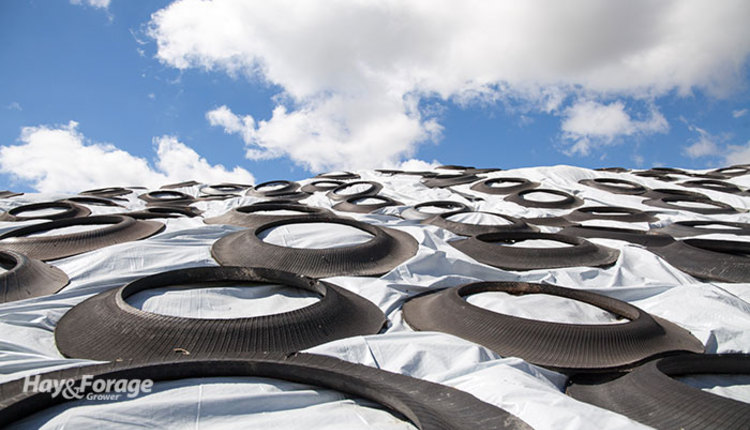
Corn silage harvest season is upon us, and with that comes the opportunity to capitalize on the labor, management, and economic investment of prior months. Of course, that also means there is equal opportunity to flush the value of some of these inputs down the proverbial toilet.
You’ve heard the recipe for a successful corn silage harvest before — chop at the right moisture, ensure the right cut length, and achieve an acceptable pack density. But even hitting these three benchmarks won’t optimize silage returns if the bunker or pile silo isn’t properly covered. Warren Rusche, an extension beef feedlot specialist with South Dakota State University (SDSU), says this latter step takes time and labor, which is why many farmers seek ways to either save money or simply choose not to cover their stored silage.
As recently outlined in an SDSU Extension Livestock Newsletter, Rusche notes that specialists in the Mount Rushmore State have tested several different methods for covering silage, using research silos made of 8-inch diameter PVC pipe. Their treatments were no cover, covering with condensed distillers solubles (CDS) syrup, covering with white-black plastic, and covering with white-black plastic plus an oxygen-barrier film. Each treatment was ensiled with and without an inoculant.
Corn was chopped to a 1/2-inch length of cut at a 66% harvest moisture content. The silage was packed to a density of 15 pounds of dry matter (DM) per cubic foot and then allowed to ensile for 104 days before being opened, sampled, and analyzed.
Silos were sampled to a 1-foot depth to measure organic matter losses. Compared to the two plastic covering treatments, the uncovered silage lost an additional 48.3% of organic matter. The CDS syrup treatment was even worse at 57.4%. These values don’t account for the losses that occurred below the 1-foot sampling depth.
The use of the oxygen-barrier film resulted in the silage having a higher lactic acid content than the other treatments, which indicates improved fermentation. In this experiment, the organic matter recovery was similar for the plastic treatments whether the oxygen-barrier film was used or not.
Using an inoculant improved fermentation in the silos that were covered with plastic. Using an inoculant on the uncovered or CDS syrup-covered silos had no effect on fermentation.
In summarizing, Rusche asserts, “Farmers spend too much time, money, and resources to produce feed for their livestock only to lose it to spoilage. To best preserve nutrient value, there are no shortcuts. Every step needs to be taken to the best of our ability, including using research-proven silage harvest management like using effective covering methods.”

